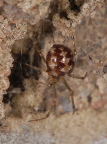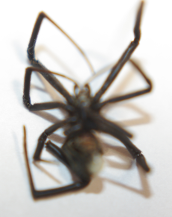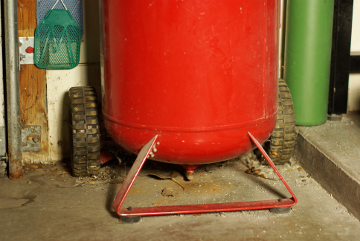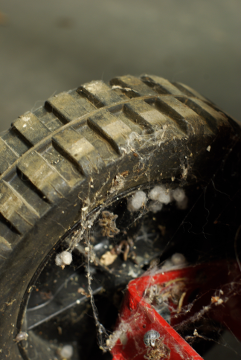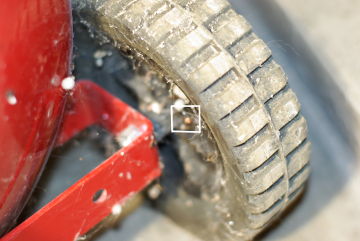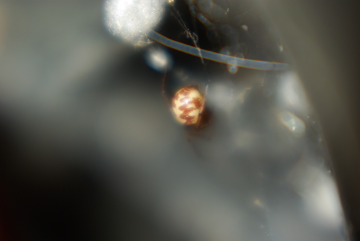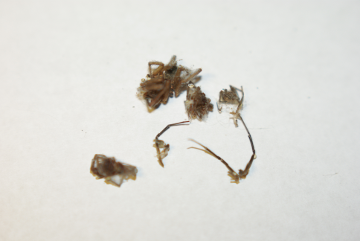The Dark Shadows of Charlene's Cobweb
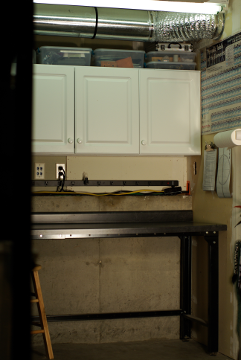
Figure 1. Laboratory.
This is a tale of one too many black widows. Figure 1 shows the lab located at the front of my spacious garage.
Everything's shiny now, but it wasn't always so. Before the lab area was remodeled it contained a wood bench backed by plywood and a dropped ceiling with wood panels. Black widows normally nest a foot or two above ground level. Almost a dozen black widows were discovered in my garage over the years before Charlene and her sisters garrisoned it. Figure 2 shows the carcass of one such black widow. You can just barely make out the shriveled remnants of the tell-tale orange hourglass on her abdomen if you look real close.
One particularly adventurous black widow spun her cobweb in the woodwork that was replaced by the shiny HACV duct near the ceiling, a couple of feet above my head. That did it for me. It was bad enough finding black widows near the floor, but the sight of one above my head made my lip quiver.
So the lab was remodeled to make it much more open and clean. The old plywood backed, wood bench was moved outside on the deck. My research indicated that Steatoda triangulosa was the answer to my prayers because S. triangulosa poses minimal threat to humans and S. triangulosa preys upon Latrodectus hesperus, commonly known as the black widow. Enter Charlene and her sisters. The Amazonian warrior sisterhood lives under pallets, such as the one shown in Figure 3, under the compressor shown Figure 4, and underneath bottom shelves.
It's time for Charlene's closeup. Let's take a closer look at the dark shadows under that compressor. Several of Charlene's egg sacs are shown in Figure 5, along with a couple of spider carcasses. One spider carcass is located on the red bracket at the bottom edge of the image. The other carcass is located to the left of the largest cluster of egg sacs near the top of the wheel. You might believe that so many egg sacs portend a garage that eventually crawls with spiderlings. Not to worry, Mommie Dearest cannibalizes her own brood to keep the population down. (See the Feeding link at the bottom of this page.) You can see Charlene's big brown bum within the white square shown in Figure 6
Although Charlene's legs are barely visible in Figure 7, the image clearly shows the white triangles of the eponymous spider. Figure 8 shows leftover spider parts pulled out of Charlene's cobweb for purposes of illustration. Charlene and her warrior sisters successfully stopped the black widow invasion of my garage. There's been no sign of L. hesperus for years now.
Links
- Steatoda triangulosa at Spider ID
- Triangulate Cobweb Spider Feeding
- Steatoda triangulosa at Spider Bed and Breakfast
- "Charlotte's Web" by E B White
<© 2018 Don Kuenz>

